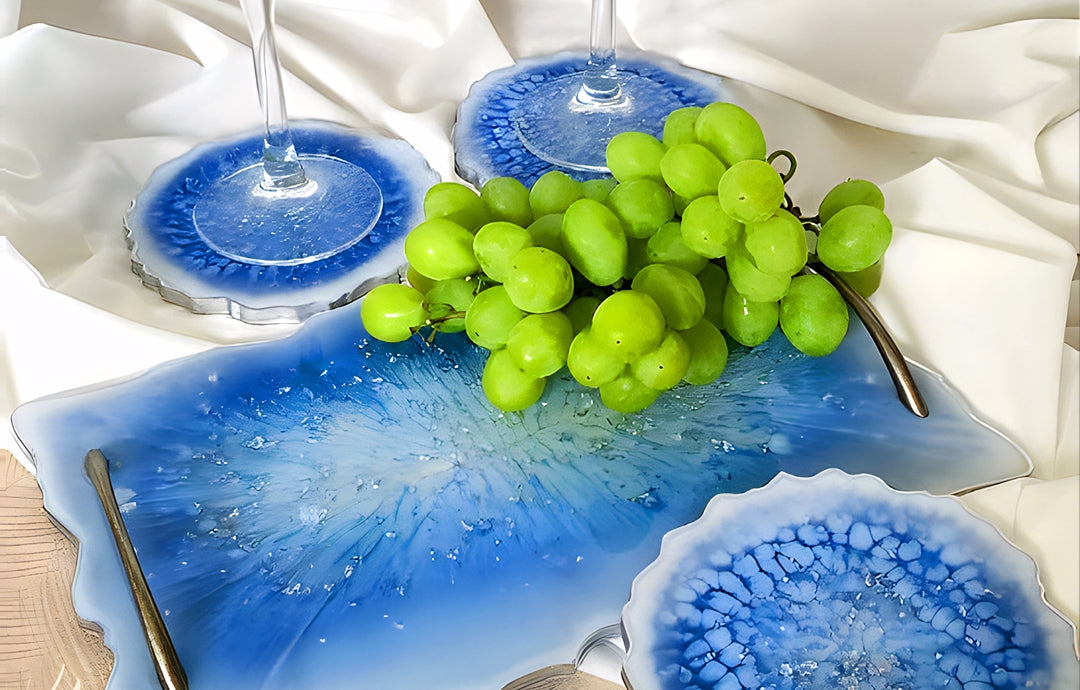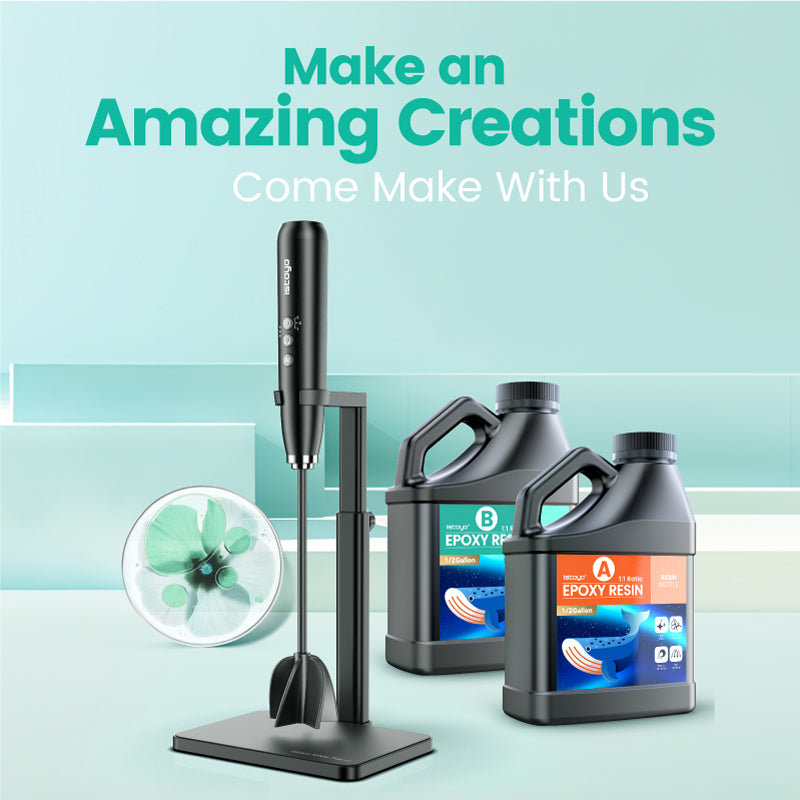Food Safe Epoxy – A Helpful Guide to Designing Safe and Stunning Surfaces

If you're in search of a way to add a touch of creativity and safety to your kitchen or dining area, look no further than food safe epoxy! This helpful guide will walk you through all you need to know about food safe epoxy, its advantages, and some exciting applications. Get ready to transform your space with safe and stunning surfaces!
Getting to Know Food Safe Epoxy
Food safe epoxy is a specialized epoxy resin that has been rigorously tested and approved by regulatory bodies like the Food and Drug Administration (FDA). With its formulation, it ensures that no harmful chemicals will leach into your food or beverages. When purchasing epoxy resin, always look for labels indicating that it is "food safe" or "food grade."
The Benefits of Food Safe Epoxy
a. Safety First: The greatest advantage of using food safe epoxy is the peace of mind it brings. By using this specialized epoxy resin, you can rest assured that no toxic substances, such as Bisphenol A (BPA), will contaminate your food. This makes it ideal for surfaces that come in direct contact with food and drink.
b. Durability and Versatility: Food safe epoxy offers excellent durability and can withstand the demands of everyday use. Once cured, it forms a hard and glossy surface that is resistant to scratches, stains, and impacts. Additionally, it can be used on a wide range of materials, such as wood, concrete, and metal, allowing you to unleash your creativity.
c. Easy Maintenance: Maintaining surfaces coated with food safe epoxy is a breeze. Simply wipe them clean with mild soap and water to keep them looking new.
Tips for Working with Food Safe Epoxy
a. Prepare the Surface: Before applying food safe epoxy, ensure that the surface is clean, dry, and free of any dust or debris. Proper surface preparation is essential for a successful application.
b. Follow Mixing Instructions: Accurate measuring and mixing of epoxy resin and hardener is crucial for achieving the desired results. Follow the instructions provided by the manufacturer carefully to ensure proper curing and durability.
c. Work in a Well-Ventilated Area: Epoxy resin emits fumes during the curing process, so it's important to work in a well-ventilated space to avoid inhaling the fumes. Use a fan or open windows to improve airflow.
d. Practice Patience: Epoxy resin requires a curing time to become fully hardened. Follow the manufacturer's instructions regarding the curing time for best results. Avoid using the surface before it has fully cured to prevent any issues.
e. Safety Precautions: While food safe epoxy is non-toxic when cured, it's important to take safety precautions during the application process. Wear protective gloves, goggles, and work in a well-ventilated area to avoid any potential contact or inhalation.
Standards and Certification
When choosing a food safe epoxy, look for products that comply with international standards such as the FDA regulations or European Union regulations. These certifications ensure that the epoxy has undergone extensive testing and is approved for contact with food.
Maintenance and Longevity
To maintain the beauty and longevity of surfaces coated with food safe epoxy, avoid exposing them to excessive heat, direct sunlight, or harsh chemicals. Use cutting boards and trivets to protect the surface from sharp objects and hot pans.
Exploring New Trends
As the popularity of food safe epoxy grows, new trends and techniques are emerging. For instance, geode-inspired designs have become increasingly popular. By using different colored epoxy resin and arranging them in intricate patterns, you can create stunning geode-like surfaces that are both visually appealing and safe for food contact.
Consulting a Professional
If you're new to working with epoxy or have specific design requirements, it may be beneficial to consult a professional. They can provide guidance on material selection, application techniques, and even create custom designs tailored to your preferences. Their expertise will help ensure a successful and satisfactory outcome for your project.
Inspiring Creativity
Food safe epoxy opens up a world of creative possibilities beyond kitchen surfaces. Consider using it to enhance other areas of your home, such as tabletops, bathroom vanities, or even decorative elements like coasters and wall art. With endless color choices and the ability to embed various materials, your imagination can truly run wild.
Sharing Your Work
Once you have mastered the art of working with food safe epoxy, don't hesitate to share your creations with others. Join online communities, participate in forums, or create social media accounts dedicated to showcasing your epoxy creations. You may inspire others and learn new techniques through the experiences and knowledge-sharing of fellow epoxy enthusiasts.
FAQ
Is food safe epoxy really safe to use?
Absolutely! Food safe epoxy is specially formulated to meet strict FDA regulations and ensure that no harmful chemicals leach into your food or drinks. Look for epoxy resins that are labeled as "food safe" or "food grade" to ensure your safety.
Can I use regular epoxy resin for food-related projects?
It's best to avoid using regular epoxy resin for anything that comes into contact with food. Regular epoxy might contain substances that are not safe for consumption. Stick to food safe epoxy to guarantee the safety of your projects.
How do I apply food safe epoxy to my kitchen countertop?
To apply food safe epoxy to your countertop, follow the manufacturer's instructions carefully. Typically, it involves cleaning the surface, applying multiple thin layers of epoxy, and allowing proper curing time between each layer. Be sure to ventilate the area and wear protective gear as recommended.
Is it easy to clean food safe epoxy surfaces?
Absolutely! Food safe epoxy surfaces are easy to clean and maintain. Simply use mild soap and water to wipe away any spills or messes. Avoid using harsh chemicals or abrasive cleaners, as they may damage the epoxy finish.
Can I use food safe epoxy on outdoor surfaces?
Food safe epoxy is primarily designed for indoor use. However, some food safe epoxy resins may offer UV resistance, making them suitable for limited outdoor applications. Check the manufacturer's specifications to ensure the suitability of the epoxy for outdoor use.
How long does food safe epoxy take to cure?
Curing time varies depending on the specific epoxy resin used and the project conditions. Generally, food safe epoxy requires 24 to 48 hours to fully cure. It's essential to allow sufficient curing time before using or placing any items on the epoxy surface.
Can I use food safe epoxy to repair chip or crack in my ceramic dishes?
Food safe epoxy can be used to repair small chips or cracks in ceramic dishes. Ensure that the epoxy resin is specifically labeled as "food safe" and follow the manufacturer's instructions for proper application and curing.
Remember, always read and follow the manufacturer's guidelines for the specific food safe epoxy resin you are using to ensure safety and optimal results. If you have any doubts or concerns, consult with professionals or experts in the field.



Leave a comment